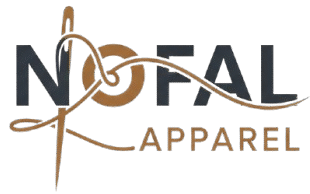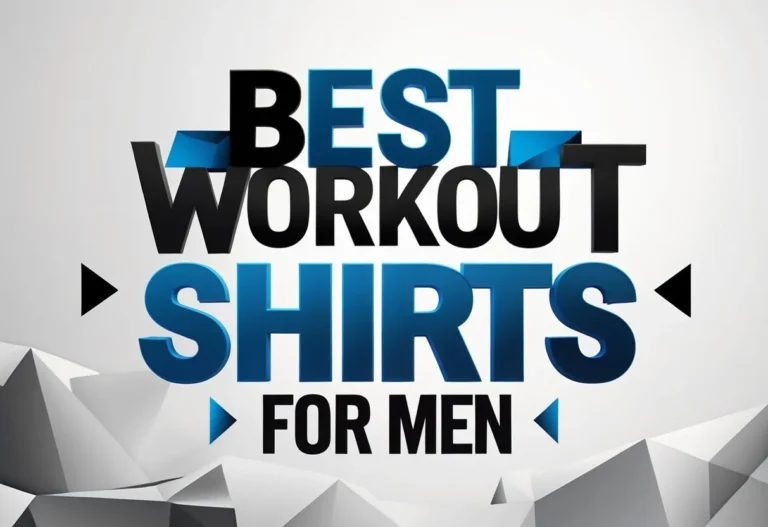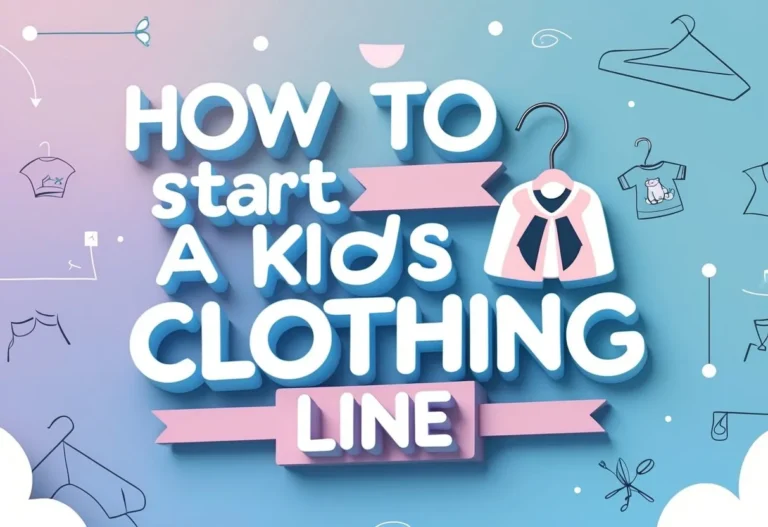A clothing line business plan is essential to turning a fashion idea into a successful brand. It provides a clear roadmap for developing products, reaching target customers, and managing finances. A well-crafted business plan helps guide decisions, secure funding, and build a competitive edge in a crowded market.

This plan outlines key elements like company mission, market research, product sourcing, and marketing strategies. It also evaluates competitors and sets financial goals. Having this comprehensive guide can help a clothing line stay focused, adaptable, and prepared for challenges in the fashion industry.
With a strong business plan, founders can showcase their brand’s unique style and values. This makes it easier to attract investors, partners, and loyal customers who resonate with the clothing line’s vision and quality standards.
Key Takeways
- A clear plan defines the brand’s goals and market position.
- Understanding customers and competitors shapes product and marketing decisions.
- Financial and operational planning prepares the business for growth and investment.
Executive Summary Overview

The executive summary offers a concise snapshot of the clothing line’s vision, goals, and financial expectations. It highlights what sets the brand apart and outlines the key reasons why investors should consider funding the business.
Key Business Goals
The clothing line aims to establish itself as a leading brand for professional women aged 26 to 64. Its primary goal is to provide modern, stylish workwear that balances trendiness with professionalism.
Short-term goals include securing retail partnerships with major department stores and building brand recognition through targeted marketing. Long-term goals focus on expanding product lines, increasing market share in urban areas, and achieving profitability within the first three years.
Financial projections anticipate steady revenue growth driven by product demand and strong retail presence. The brand plans to invest in quality materials and efficient manufacturing to maintain affordability without compromising style or durability.
Unique Selling Proposition
The brand differentiates itself by offering high-quality, fashionable clothing designed specifically for working women. Unlike traditional workwear, the line combines modern styles with functionality, appealing to women who want versatility from office to social settings.
It emphasizes affordable pricing while using premium materials sourced through reliable U.S.-based suppliers. The designs are inclusive, catering to a wide range of body types and ages.
This unique combination of style, quality, and accessibility creates a competitive edge. Customers will find clothes that fit well, look professional, and feel comfortable for both work and after-hours activities.
Investment Highlights
The business is seeking $1,000,000 in funding to cover manufacturing, marketing, legal costs, and working capital. This investment supports scaling production and building a strong brand presence.
Funds will be allocated as follows:
- $500,000 for manufacture and distribution
- $300,000 for advertising and promotions
- $100,000 for legal services
- $100,000 for operational expenses
The management team combines extensive fashion industry experience and sound financial planning. Early commitments from retail partners demonstrate market interest, reducing investor risk.
The strategy balances cost control with targeted marketing to enable quick brand growth and a solid return on investment.
Company Description and Brand Identity

This section explains the purpose, values, structure, and leadership behind the clothing brand. It clarifies the brand’s focus and how the company is organized to achieve its goals. Understanding these elements helps define the brand’s place in the fashion market and guides its future growth.
Company Mission and Vision
The company mission states the brand’s core purpose and what it aims to deliver to customers. It often highlights the focus on style, quality, or sustainability. The vision outlines where the clothing brand wants to be in the future, such as becoming a leader in eco-friendly fashion or expanding to international markets.
A clear mission and vision give the company direction and help attract the right audience. For example, a mission might be to create affordable, trend-forward apparel for young adults. The vision could be to become a top choice for casual wear within five years.
Brand Core Values
Brand core values define the principles and beliefs that guide every decision. These values can include quality craftsmanship, ethical sourcing, innovation, or customer-focused service. They form the foundation for the brand’s identity and reputation.
For a fashion brand, core values often reflect commitments to sustainability, inclusivity, and originality. Stating these values openly helps connect with customers who share these priorities. It also ensures everyone in the company understands what the brand stands for.
Business Structure
The business structure describes how the company operates legally and organizationally. Common structures include sole proprietorships, partnerships, limited liability companies (LLCs), or corporations. The choice impacts liability, taxes, and management control.
A clothing brand typically chooses a structure that supports its growth plans and financing needs. For example, an LLC offers flexibility and protects personal assets, useful for startups in fashion. The structure also affects how decisions are made and how profits are shared.
Ownership and Team Structure
Ownership details who holds the controlling interests in the company. It can be one person, several partners, or shareholders in a corporation. The ownership arrangement influences decision-making power and responsibility.
The team structure shows how the management and staff work together. Key roles might include the founder or CEO, design team, marketing, and sales managers. Clear roles and responsibilities improve efficiency and help the brand execute its business plan successfully.
| Role | Responsibility |
|---|---|
| Founder/CEO | Sets vision, oversees the company |
| Design Team | Creates the clothing line |
| Marketing Manager | Promotes the brand and products |
| Sales Manager | Manages retail and wholesale sales |
This setup ensures balanced management and a focused approach to growing the fashion brand.
Market Research and Customer Analysis

Understanding the clothing line industry requires detailed research into market trends and customer needs. Knowing who the target customers are and how they experience products is essential for designing effective business strategies and product lines.
Market Overview
The global clothing industry is valued at over $1.3 trillion and is expected to grow steadily. Economic pressures, environmental concerns, and supply chain challenges shape its current state. These factors influence consumer behavior and business operations.
Market research in this sector focuses on trends like sustainability, digital shopping, and shifting consumer preferences. Identifying gaps in the market helps clothing lines address unmet demands. Analyzing competitors provides insight into pricing, product quality, and branding.
Companies must track industry growth rates and consumer spending habits. Clear data on market size, key players, and evolving demands informs strategic decisions and investment plans.
Target Customer Profile
Target customers for clothing lines are typically defined by demographics and behaviors. Key markers include age, income, location, and lifestyle preferences.
For example, a clothing line aiming at urban professionals aged 25-45 with incomes above $75,000 focuses on consumers who value quality and sustainability. These customers seek durable, stylish apparel that aligns with their values.
Psychographics matter. Customers often prioritize ethical production and environmental responsibility. They may be tech-savvy and prefer shopping through e-commerce or select boutique stores.
Identifying customer pain points, such as the lack of stylish sustainable options, helps brands tailor products. Clear segmentation improves marketing strategies and product relevance.
Customer Experience Insights
Customer experience in the clothing industry affects brand loyalty and sales. Understanding how consumers discover, evaluate, and purchase products reveals areas for improvement.
Convenience, personalized service, and product quality rank high in customer expectations. Experiences across online platforms, physical stores, and social media influence purchasing decisions.
Customers often seek transparency about sourcing and production. Brands committed to sustainability provide detailed information, enhancing trust.
Tracking customer feedback and shopping habits allows brands to adapt and refine offerings. Investing in customization and engagement builds long-term relationships.
Competitive and SWOT Analysis

This section examines key competitors in the clothing market and evaluates their impact. It also highlights the internal and external factors affecting the business, including strengths, weaknesses, opportunities, and threats.
Direct Competitor Assessment
Direct competitors are brands offering similar clothing styles and targeting the same customer base. These competitors usually operate on a similar price level or market segment. For example, established brands like Gap, Mango, and Calvin Klein dominate market share with strong brand recognition and extensive resources.
Direct competitors often control pricing, marketing channels, and customer loyalty. New brands face challenges competing with them due to limited financial resources and lower brand awareness. However, competitors may have gaps in product variety or price accessibility that newcomers can exploit.
Competitors with strong supply chains and international reach are harder to challenge. A detailed study of their product quality, distribution networks, and marketing strategies is essential for positioning a new clothing line in the market.
Indirect Competitor Review
Indirect competitors do not sell the same products but attract the same customers’ spending. These include fast-fashion retailers, online marketplaces, and secondhand clothing stores. They capture market share by offering convenience, variety, or lower prices.
Fast-fashion brands like Zara or H&M influence trends quickly, pressuring other clothing lines to respond faster. Online platforms allow customers to compare prices and shop globally, increasing competitive pressure.
Secondhand and sustainable clothing brands appeal to environmentally conscious consumers, which is a growing segment. Indirect competitors can impact pricing strategies and customer expectations. Understanding these players helps in shaping unique selling points and adapting to shifting consumer preferences.
SWOT Analysis
A SWOT analysis identifies key factors that influence business success.
Strengths
- Quality production with modern equipment
- Experienced management team
- Ability to produce affordable ready-to-wear clothes
Weaknesses
- Limited financial resources compared to established brands
- Lower brand recognition
- Dependence on market trends and external suppliers
Opportunities
- Large, diverse global clothing market
- Growing demand for affordable fashion
- Ability to enter new geographic markets
Threats
- Economic downturns reducing consumer spending
- New competitors copying business models
- Price competition from mass-market and fast-fashion brands
This analysis guides strategic decisions to leverage strengths and opportunities while addressing weaknesses and mitigating threats.
Products, Services, and Sourcing

This section explains the types of products offered, the use of sustainable materials, and how manufacturing and suppliers are selected. It highlights the importance of quality, eco-friendly options, and strong supplier relationships to support the brand’s goals.
Product Line Overview
The clothing line includes a variety of items such as blouses, sweaters, blazers, pants, skirts, dresses, and coats. It also offers activewear and footwear designed to combine style with comfort and function.
Each product targets professional women seeking modern and trendy workwear that can transition to casual or social settings. Pricing is set to be affordable while maintaining high quality.
Services may include custom tailoring and limited edition collections to attract customers looking for unique pieces. Seasonal updates ensure the line stays current with fashion trends.
Sustainable Materials and Practices
The brand uses organic cotton, recycled fabrics, and other sustainable materials to reduce environmental impact. This commitment aligns with growing consumer demand for eco-friendly fashion.
Materials are carefully chosen to balance durability and sustainability without sacrificing style. The company avoids harmful chemicals and uses natural dyes when possible.
Sustainable practices extend to packaging and shipping by using recyclable or biodegradable materials. The business aims to reduce waste throughout the supply chain.
Manufacturing and Supplier Chains
Manufacturing is outsourced to trusted facilities that meet quality standards and ethical labor practices. Suppliers are selected based on transparency, track record, and location.
A key focus is partnering with manufacturers that prioritize sustainable production methods and comply with local regulations. This supports timely delivery and production scalability.
The supply chain includes material sourcing from U.S.-based suppliers to maintain control over quality and reduce transportation emissions. Regular audits ensure suppliers uphold agreements on material sourcing and working conditions.
Operations, Logistics, and Inventory Management

Efficient operation of a clothing line requires careful planning of daily tasks, inventory control, and shipping methods. Clear procedures and systems ensure products are available when customers want them and that orders arrive on time. Managing these details supports smoother business growth and customer satisfaction.
Day-to-Day Operations Plan
The day-to-day operations plan outlines the main activities needed to keep the clothing line running. This includes managing production schedules, quality checks, and coordinating with suppliers. It also covers staff duties, whether in a retail store, pop-up shop, or warehouse.
Clear workflows help reduce delays. For example, setting regular check-ins with manufacturers can prevent supply issues. Incorporating sustainable practices, like eco-friendly materials or waste reduction, can be part of the process.
Operations should also include customer service handling, returns management, and updating product lines based on sales data. Assigning specific roles for these ensures accountability and efficiency.
Inventory Management Systems
Inventory management is vital to balance stock levels with customer demand. A good system tracks product quantities, sales trends, and reorder points. This avoids overstock or running out of popular items.
Clothing lines often use software or cloud-based tools to monitor inventory in real time. These tools can sync stock levels across online stores, retail locations, and pop-up shops.
Effective inventory control includes categorizing products by style, size, and collection. Maintaining a buffer stock of bestsellers reduces risk of shortages. Regular audits help spot errors and damaged goods.
Shipping and Logistics
Shipping and logistics cover how products move from production to customers. Choosing reliable shipping partners ensures timely delivery both for wholesale and direct-to-consumer orders.
The plan should address packaging, shipping costs, and tracking systems. For smaller or new clothing lines, partnering with print-on-demand services can reduce storage needs and upfront costs.
For retail stores and pop-up shops, logistics involve timely restocking and handling returns efficiently. Optimizing shipping routes and using fulfillment centers can lower expenses and improve customer satisfaction.
Clear communication with customers about shipping times and policies builds trust and encourages repeat business.
Marketing and Sales Strategy

A strong marketing and sales strategy is essential for a clothing line to attract customers and drive revenue. It involves carefully planned marketing efforts, leveraging digital platforms, building brand awareness, and forming business partnerships to support sales growth and market reach.
Marketing Plan Development
Crafting a marketing plan starts with setting clear sales goals and defining target customer segments. It must detail the marketing strategies that will promote the brand effectively, such as print ads, email marketing, and content marketing.
The plan should allocate budgets to each channel based on expected reach and return on investment. Pricing strategies should align with market positioning and customer expectations.
Regular market research helps refine tactics and measure success against key performance indicators. The plan must be flexible to adapt to changing trends and customer preferences.
E-Commerce and Digital Channels
E-commerce is critical for modern clothing lines to reach wider audiences. Setting up an online store, either as a standalone website or through marketplaces, expands sales channels beyond physical locations.
Digital channels like Google Ads and email marketing support customer acquisition and retention. Automated email campaigns can nurture leads and promote new products.
Inventory management systems linked to the online store streamline order fulfillment. Tracking online sales data provides insights for optimizing product offerings and marketing efforts.
Social Media and Influencer Marketing
Social media marketing builds brand visibility and customer engagement. Platforms like Instagram, TikTok, and Facebook are valuable for showcasing products and running targeted ads.
Influencer marketing can amplify reach by partnering with personalities who appeal to the target audience. These partnerships should be authentic and aligned with brand values.
Content should be tailored to each platform, combining organic posts and paid promotions. Regular interaction with followers helps build a loyal community.
Strategic Partnerships
Forming strategic partnerships is a useful way to expand market presence. Collaborations with other brands, local retailers, or fashion events can increase brand exposure.
Partnerships may involve co-branded products, shared marketing campaigns, or joint sales events. Carefully selecting partners ensures alignment with the clothing line’s image and values.
These alliances can also reduce marketing costs and provide access to new customer bases while strengthening the brand’s reputation.
Financial Planning and Projections
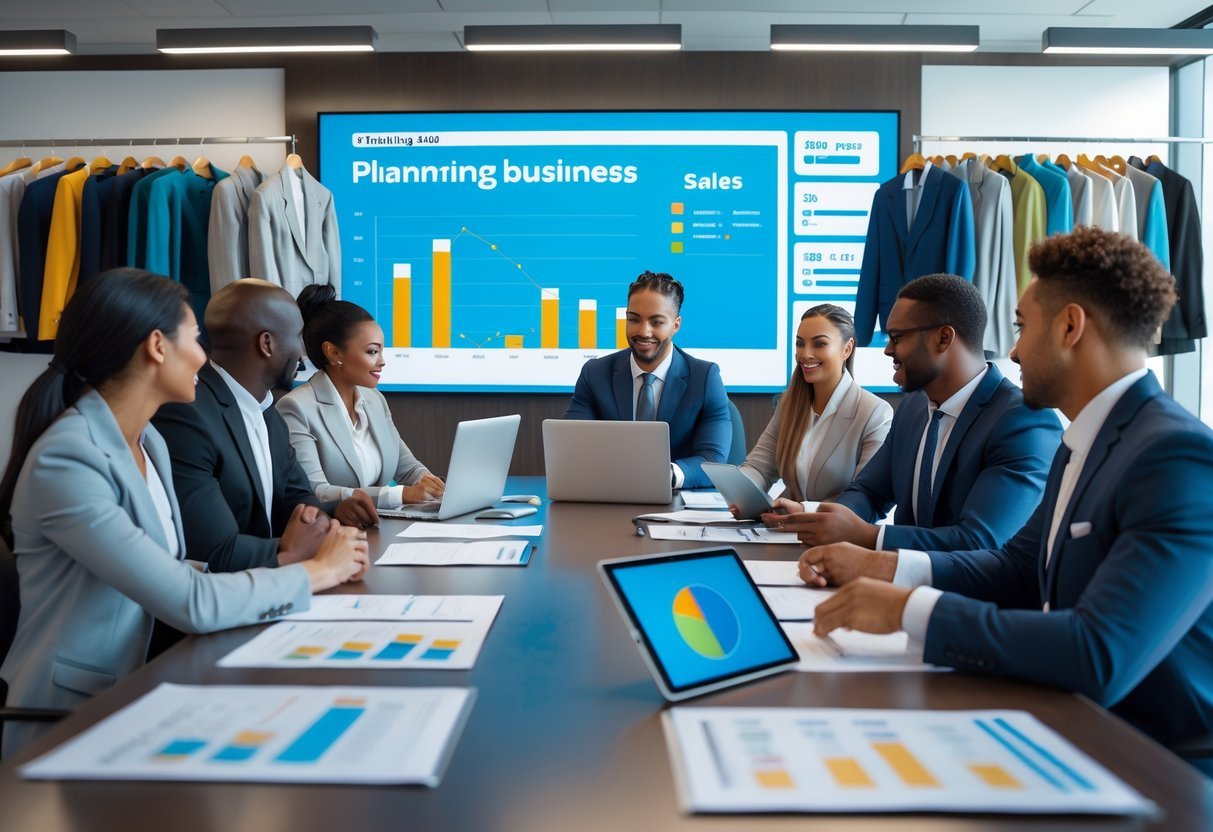
A solid approach to managing revenue, expenses, and profits is crucial for a clothing line’s success. Financial planning involves detailed forecasting and tracking to ensure the business stays profitable. This includes setting clear expense limits, choosing competitive pricing, and keeping accurate financial records such as balance sheets.
Financial Projection Models
Financial projection models help estimate future revenues and costs over several years. They use past data and market research to predict sales, profit margins, and cash flow. Clothing line startups often use 3- to 5-year projections to plan expenses and secure funding.
These models usually include:
- Income statements showing revenue and expenses
- Cash flow projections tracking money in and out
- Break-even analysis to identify when profits start
Using an Excel-based financial model is common because it allows for easy updates and scenario testing. This clarity aids in making realistic goals and managing risks.
Key Expenses Overview
Expenses in a clothing business fall into categories such as production, marketing, and operations. Initial costs often include fabric sourcing, manufacturing, and product design. Recurring costs cover staff salaries, rent, and advertising.
Key expense categories include:
- Material and manufacturing
- Marketing and sales promotion
- Shipping and logistics
- Administrative costs
Careful expense tracking helps avoid cash flow problems. Accurate projections of these costs are essential for budgeting and adjusting pricing or marketing plans as needed.
Pricing Strategies and Structure
Pricing strategies affect both sales volume and profitability. A clothing line must balance cost coverage with market competitiveness. Common methods are cost-plus pricing, where the cost is marked up by a set percentage, or competitor-based pricing, which aligns with similar brands.
Factors in pricing include:
- Material and labor costs
- Desired profit margin
- Target customer willingness to pay
- Market trends and competition
Clear pricing structures often use tiered pricing or seasonal discounts. Effective pricing strategies support both short-term sales goals and long-term profitability.
Balance Sheet and Reporting Clothing Line Business Plan Line
Balance sheets provide a snapshot of the clothing line’s financial health at a specific time. They list assets, liabilities, and owner’s equity, showing what the business owns and owes. Regular reporting helps identify financial strengths and weaknesses.
Main components are:
| Section | Description |
|---|---|
| Assets | Cash, inventory, equipment |
| Liabilities | Loans, unpaid bills |
| Equity | Owner’s investment and retained earnings |
Timely balance sheet updates enable business owners to manage debts, plan investments, and prepare accurate funding requests. They also support compliance with accounting standards and foster investor confidence.
Funding, Investment, and Growth
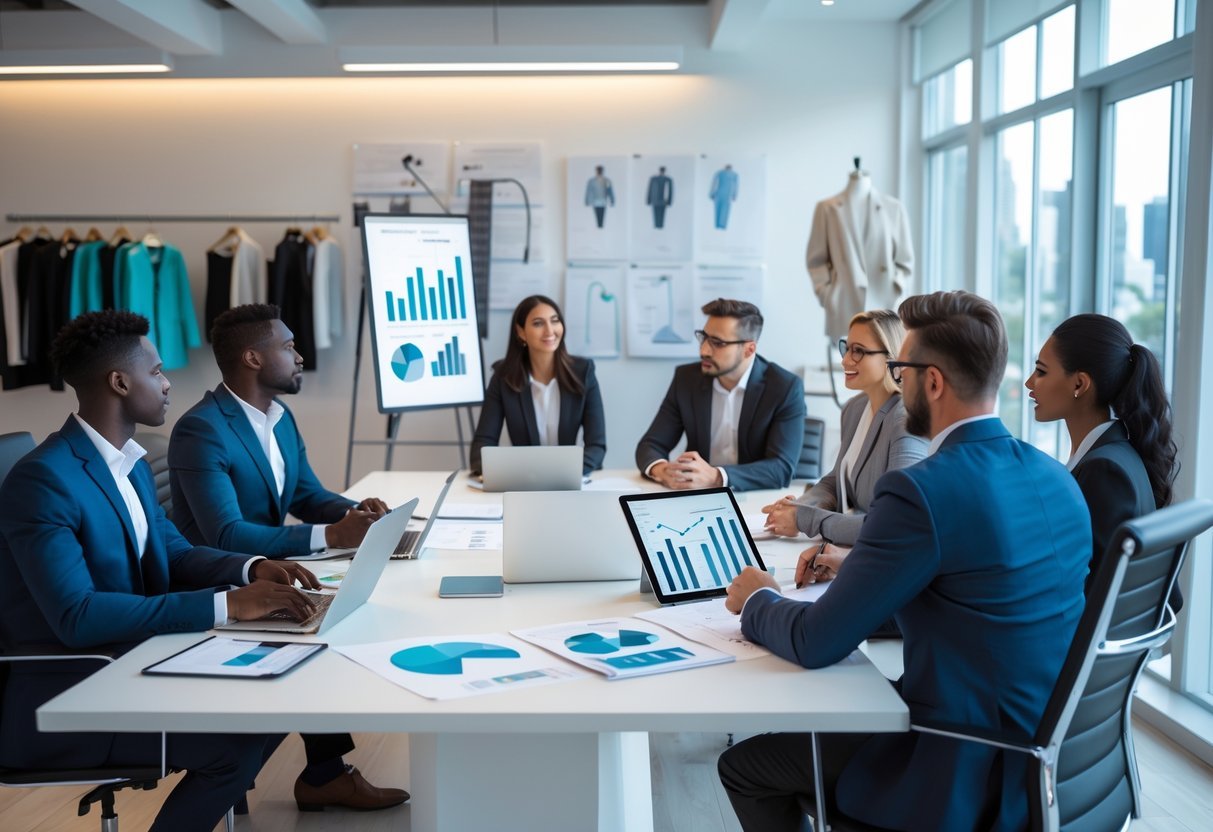
Starting and growing a clothing line requires careful planning of funds and clear steps for expansion. It involves knowing how much money is needed, preparing a strong pitch for investors, and setting a detailed roadmap for growth.
Startup Capital Requirements
Determining startup capital is the first step in securing funding. This includes costs such as product development, raw materials, manufacturing, marketing, and initial inventory. Rent for production space or retail, salaries, and legal fees should also be included.
Entrepreneurs often use a Clothing Line Business Plan Line to calculate these expenses clearly. A detailed business plan outline helps to avoid missing hidden costs. It is common to prepare a financial section that projects expenses for at least the first year of operation.
Many startups seek money from angel investors or small business loans to cover these needs. Presenting a clear, organized business plan PDF can increase chances of getting funds by showing transparency and preparation.
Investor Pitch Essentials
A strong investor pitch focuses on key elements that capture interest quickly. It must highlight the unique value of the clothing line, target market, competitive edge, and scalability.
The pitch should use data from market research to back claims. Including financial projections from the business planning process demonstrates potential returns. Explaining use of funds and expected milestones builds trust.
Clear visuals and summaries from the Clothing Line Business Plan Line template reinforce points. Investors look for confidence, clarity, and a well-thought-out strategy. Addressing risks openly and explaining solutions shows readiness.
An effective pitch often includes a concise executive summary and answers to common investor questions about sales, marketing, and operations.
Growth and Expansion Roadmap
Growth planning involves setting measurable goals for scaling the business. This includes expanding product lines, entering new markets, increasing production capacity, and building brand awareness.
A roadmap should define clear phases such as customer acquisition targets, partnership development, and marketing campaigns. It may also include launching physical stores or expanding online sales channels.
Tracking financial performance against projections in the business plan helps guide decisions. Reinvesting profits strategically supports sustainable growth.
Regularly updating the clothing line business plan ensures the roadmap reflects market changes and new opportunities. Having a plan ready for revisions signals professionalism to investors and partners.
Frequently Asked Questions
A clothing line business plan must clearly lay out several key areas to guide the business. These include defining the brand, knowing the target market, planning operations, and preparing financial details. Legal and operational steps must also be included to create a complete plan.
What are the key components of a clothing line business plan?
Clothing Line Business Plan should include the brand’s vision, target audience, product line, marketing strategies, operational plan, and financial projections. Each section must explain how the business will function and grow.
How do you determine the market need in a business plan for a clothing line?
Market need is identified by researching customer preferences, analyzing competitors, and spotting gaps in the current market. This data helps define who will buy the products and why.
What financial projections are necessary for a clothing business plan?
Financial projections should cover start-up costs, expected sales, profit margins, cash flow, and break-even analysis. Clear forecasts help show the potential profitability of the business.
How can one define the brand identity in a clothing line business plan?
Brand identity is established by choosing a unique style, logo, messaging, and target customer image. It reflects the values and personality of the clothing line to connect with buyers.
What steps are involved in creating an operational plan for a clothing line?
An operational plan outlines production methods, sourcing materials, inventory management, and distribution channels. It explains how daily tasks keep the business running smoothly.
What are the legal considerations to include in a business plan for a clothing line?
Legal points include registering the business, protecting trademarks, understanding labor laws, and securing necessary permits. Addressing these helps avoid legal issues later.
